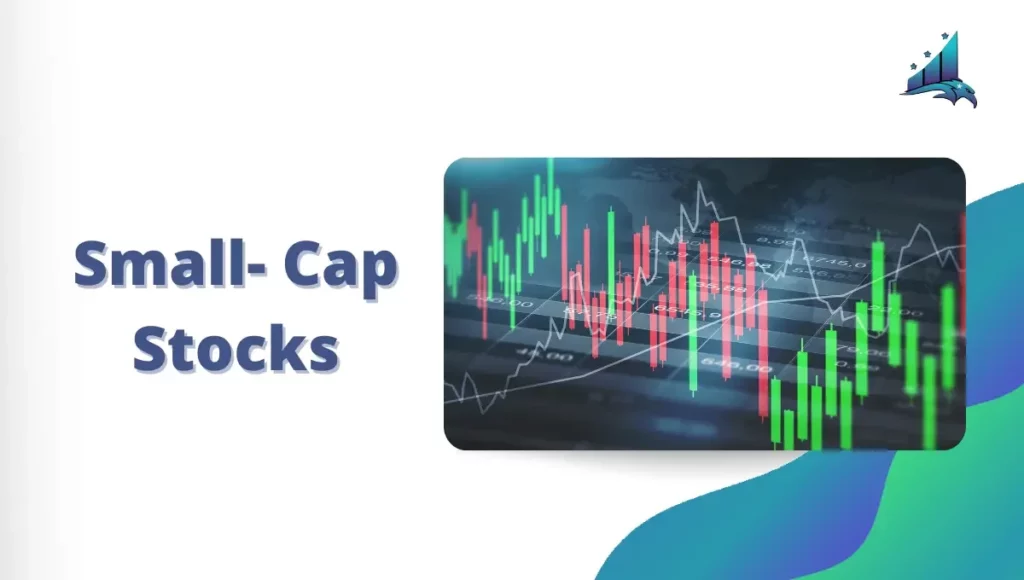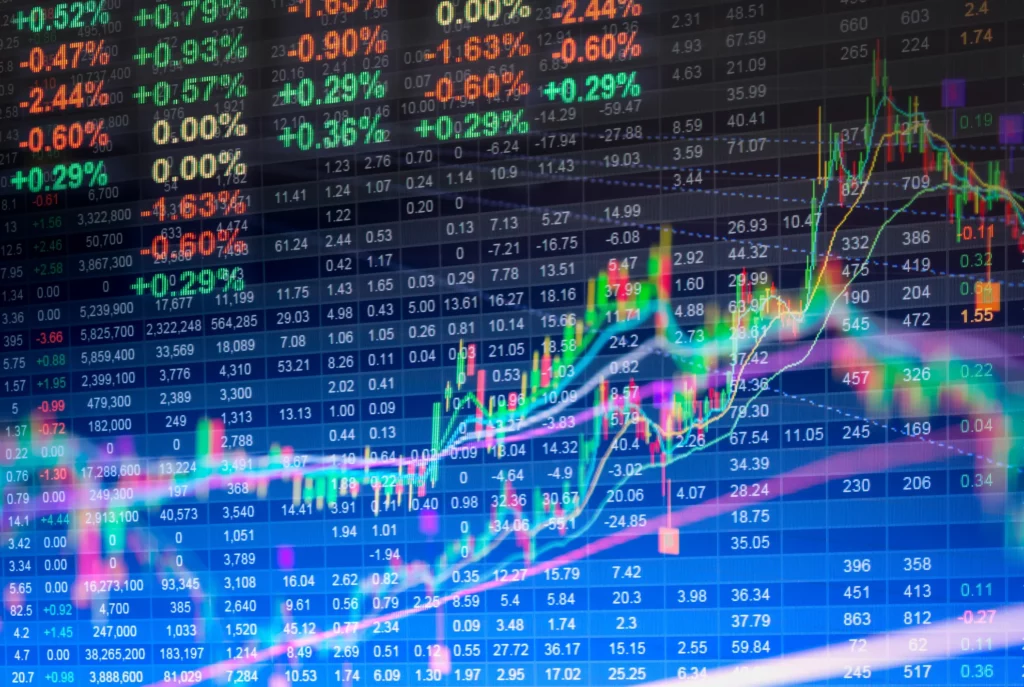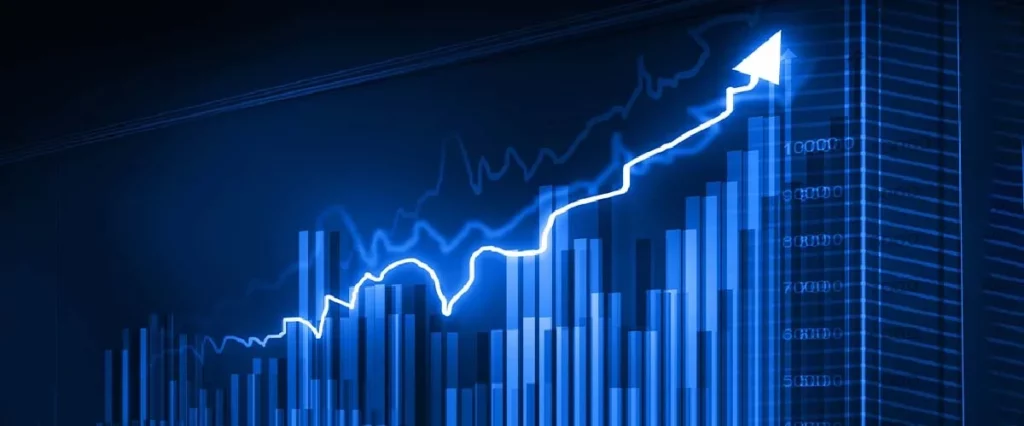
What are Large-Cap Stocks?
The abbreviation “cap” stands for market capitalization. It is a way to calculate a company’s value by multiplying the total number of outstanding shares by the price of each unit. Therefore, shares issued by a company with a high market capitalization are known as large-cap stocks.
According to this valuation, capped companies can be divided into three main categories: large-cap, mid-cap, and small-cap.
The following table demonstrates the classification.
| Small-cap companies | Mid-cap companies | Large-cap companies |
| Below Rs. 5,000 Crore | Within Rs. 5,000 – 20,000 Crore | Above Rs. 20,000 Crore |
All large-cap companies are listed in the identified stock exchange indices at the top of each market. The Nifty 50 is a representation of the fifty large-cap stocks with the highest volume of trading in India.
Due to the fact that the companies that own some of the stocks in this group are frequently market leaders or among the top three players in their respective industries, some of these stocks are also referred to as blue-chip stocks. They are reputable in the industry, successful, and financially secure. These stocks are therefore the most sought-after ones on the market.
Features of Large Cap Stocks
Some of the features of large-cap stocks are discussed below –
- Moderate-returns: Large-cap companies are financially stable and have a proven track record. As a result, they are unable to experience the same stock price growth as mid-cap and small-cap companies. Returns on such stocks are primarily derived from the dividend portion.
- Low-risk: Large-cap companies are sound, resilient, and have a solid financial base. As a result, large-cap shares react to market volatility in a moderate way. Since these businesses, unlike mid-cap and small-cap companies, can afford to continue operating even during a market downturn, the risk involved with such investments is significantly lower.
- Rich history: The companies on the list of large-cap stocks have a history. They inspire confidence because of their extensive operational history, which is publicly accessible through a number of channels. It can be used for analysis by potential investors.
- Expensive: These stocks are typically more expensive than other investment options.
- Liquid:They are the most liquid investment options available because of their wide appeal and simple accessibility to buyers.
Why Should You Invest in Large-Cap Stocks?
You should incorporate large-cap stocks into your investment portfolio for the following reasons:
- Stability: When your investment portfolio includes large-cap stocks, it is more stable. It is extremely unlikely that a large-cap company will experience financial distress or go out of business as a result of a bear market or major market crisis. As a result, in the event of a market downturn, it might serve to partially offset any losses you suffer from other securities in your portfolio.
- A regular flow of income:Dividends from large-cap stocks serve as the primary source of income rather than capital gains. Therefore, even though the sale or transfer of the same might not generate significant capital gains, you are still guaranteed regular dividend payments. This factor can compensate for the absence of periodic returns from other types of securities.
- Availability of information: Contrary to mid-cap and small-cap companies, large-cap companies in India are required to make their financial statements and other relevant documents available to the public. In a list of large-cap stocks, their operations and profitability provide a complete picture of their performance. Such information is necessary for making wise investment decisions. You can assess this data against your portfolio to see what would best complement it.
By including these stocks in your investment portfolio, you can achieve the much-needed balance. As a result, you can center your entire investment portfolio around the large-cap stock. Using this strategy will make investing easier.
Drawbacks of Large-Cap Stocks?
The two major drawbacks of stocks in the large-cap are –
- Low capital appreciation: One of the main drawbacks of large-cap stocks is their constrained potential for capital growth. Due to their moderate response to market changes, the stock values do not rise as much as mid-cap and small-cap stocks do during a bull market.
- Expensive: Large-cap stock investments in India require a significant amount of capital, so people with low disposable income cannot afford to buy these stocks.
- Rare: Due to a recent SEBI classification, there are currently only a small number of large-cap companies in India.
As a result, if you are entering the market with little disposable income and an eye toward a high return, you should choose alternative ways to use your capital.
Some Alternative Options to Large-Cap Stocks?
Here is a list of alternative investment options –
- Mid-cap stocks: Over the past few years, mid-cap stocks have performed better. Despite being more volatile and not guaranteeing consistent dividends, these companies have a significant potential for capital growth.
- Exchange-Traded Funds: ETFs are a subclass of mutual funds, which are traded on reputable stock exchanges. Stocks and fixed income securities such as bonds, treasury bills, and debentures may be included in these funds. For novice investors, Exchange-Traded Funds are a wise choice because they exhibit characteristics resembling those of stocks in addition to other benefits like low costs and tax efficiency.
- Equity Funds: They are a particular class of mutual fund in which the total investment is gathered and used to purchase stocks or equity shares. They offer returns that are comparable to those of stocks while minimizing risk.
- Multibagger: Stocks that provide multiple returns on investment are known as multibaggers. They are well known for their affordable prices and high rate of return. For instance, a double-bagger investment doubles the original investment’s value.
FOR MORE INFO CLICK THIS SITE:https://learningsharks.in/
FOLLOW OUR PAGE:https://www.instagram.com/learningsharks/?hl=en








